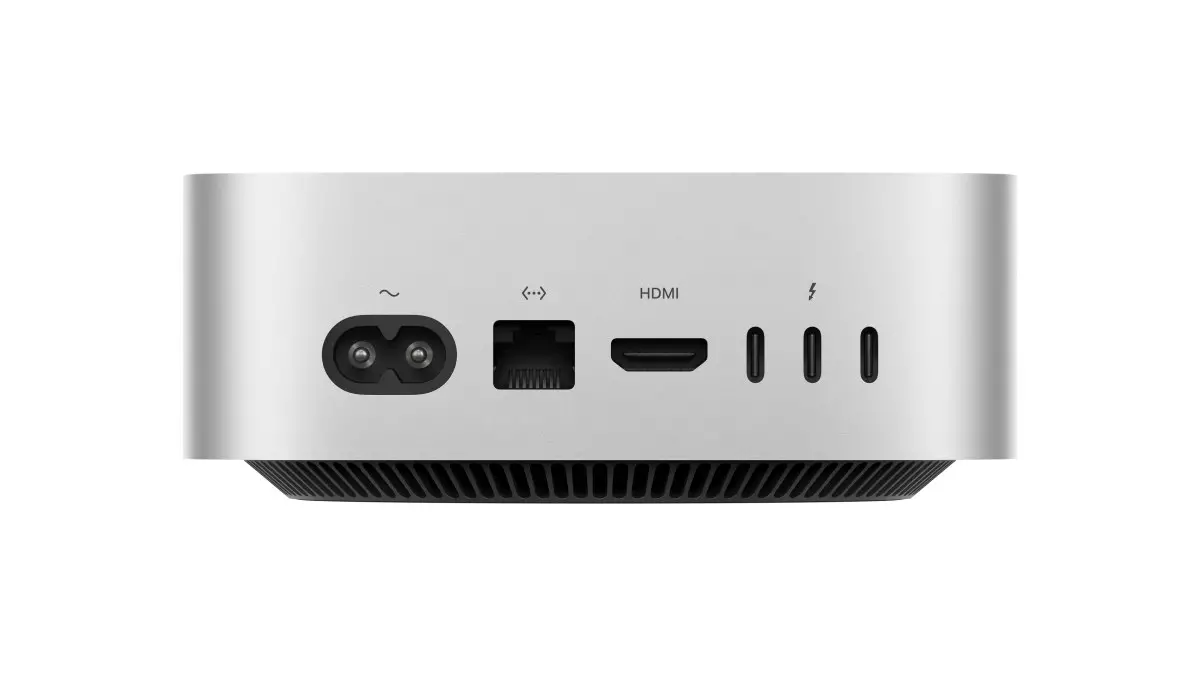Apple continues to push the boundaries of its hardware capabilities with the introduction of the M4 chip, adding another dimension to its ecosystem of first-party silicon. This new component marks a significant evolution in Apple’s technology lineup, particularly for the compact Mac Mini, which is making its mark as a formidable desktop solution. The M4 chip not only enhances computational power but also showcases Apple’s commitment to integrating cutting-edge technologies into its products.
Among the standout features of the M4 chip is its groundbreaking support for Thunderbolt 5, which drastically increases data transfer rates from 120 GB/s to an impressive 273 GB/s. This enhancement positions the M4 Pro version as an excellent choice for professionals and enthusiasts requiring fast data handling for intensive workloads. The M4 Pro variant boasts five Thunderbolt 5 ports, ensuring ample connectivity options for additional peripherals and devices. Meanwhile, the standard M4 model continues to implement Thunderbolt 4, which, while still capable, does not take full advantage of the latest high-speed technology.
Built upon a refined 3-nanometer manufacturing process, the M4 Pro chip features a robust architecture with up to a 14-core CPU that includes 10 performance cores and four efficiency cores. The graphics processing unit can reach up to 20 cores, complemented by a Neural Engine capable of 16 cores. In comparison, the base M4 configuration caps the CPU at 10 cores, prioritizing performance with six efficiency cores and a 10-core GPU. This diverse range of specifications allows users to select a model that best fits their professional and creative needs.
Apple has made substantial strides in single-threaded performance, with the M4 chip reportedly excelling in benchmarks designed to simulate real-world usage. Furthermore, the improvements to the graphics engine are noteworthy; the GPU reportedly doubles the speed of ray-tracing tasks, thereby enhancing the overall visual experience, especially for gaming and rendering applications. This trajectory reflects Apple’s ambition to position the Mac as a serious contender within the gaming market, an arena historically dominated by Windows-based systems.
Additionally, the updated Neural Engine is another highlight, reportedly operating at double the speed of its predecessor. This upgrade will become pivotal in the integration of artificial intelligence features that are set to roll out in the coming weeks, enhancing the overall user experience and productivity across various applications.
However, with these advancements comes a price to pay. The new Mac Mini with the M4 chip starts at $599, while those opting for the Pro version will find themselves looking at a starting price of $1,399. While these devices bring impressive technology, the premium pricing could be a barrier for some users. Preorders are slated to begin shortly, with shipments anticipated to start on November 8, presenting a timely opportunity for consumers eager to explore Apple’s latest innovations.
With the unveiling of the M4 and its impressive feature set, Apple is undoubtedly laying the groundwork for the future of its computing platforms. The blend of outstanding processing power, superior data transfer capabilities, and a strong push toward enhancing the gaming experience signals Apple’s intent to redefine its market positioning. As always, with innovation comes a price, leaving potential buyers to weigh the benefits against the investment. Nonetheless, the M4’s debut encapsulates Apple’s commitment to delivering groundbreaking technology while fostering a rich user experience.

